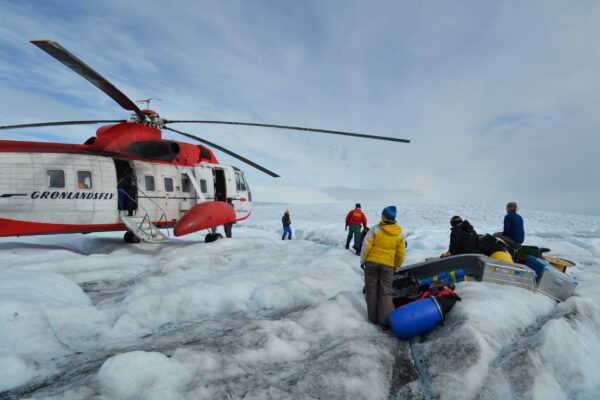The University of Texas at Austin’s Department of Geological Sciences has a new name: The Department of Earth and Planetary Sciences.
The new name captures the breadth of research happening in the department and reflects recent changes to the undergraduate curriculum that will help UT geosciences students prepare to take on critical issues facing the planet and society, such as better understanding and mitigating climate change, preparing for natural hazards, and sustainably managing critical Earth resources and water supplies.
“Today’s geoscientists do so many things. We’re at the confluence of so many different fields,” said Daniel Stockli, department chair and the Chevron Centennial Professor. “The new name is a more representative vision of what we do, what we teach and, to some extent, what we want to be.”

The department is part of the UT Jackson School of Geosciences and is one of the oldest academic units on campus. Founded in 1888 as the Department of Geology, it expanded rapidly during the Texas oil boom of the early 20th century. It underwent its first name change in 1967 in response to broadening research interests and opportunities, particularly in seismology and geophysics.
Stockli said that the field of geosciences has only continued to grow since then, and now frequently cuts across traditional disciplines to encompass the entire Earth system and other planetary bodies. In the recent past, oil and gas exploration dominated the opportunities available to geosciences students and researchers. Although hydrocarbons remain an important field of study, there are now many different ways to be a geoscientist.
For example, researchers and students in the department are creating climate models to forecast water supply levels, storms and heat waves; investigating an array of energy transition solutions; studying what triggers earthquakes, and how the ingredients for life might reach other worlds.
“It’s much more representative of us,” Stockli said. “It’s a vision of an entire system — the planet, the lithosphere, the hydrosphere, the biosphere, the atmosphere.”
The name change also comes as the department is in the midst of updating undergraduate education to better reflect new opportunities in geosciences.
In 2024, the department will offer a new undergraduate degree in climate system science focused on a quantitative understanding of the Earth’s climate system. The department is also opening all introductory geosciences courses to UT students. These courses include classes on climate, water resources, natural disasters and the environment, and they provide multiple options for a student interested in a geoscience degree. Previously, students had to take introductory geology before enrolling in other introductory geosciences courses.
At the same time, the department is working on a shared core curriculum for all eight of its geosciences majors so all students are exposed to a breadth of geosciences subjects.
Finally, UT’s Environmental Science program, one of the University’s first inter-college degrees, is updating its coursework to more closely align with the skills needed for careers in environmental science and sustainability. Timothy Shanahan, a professor in the department, is leading the effort as the program’s first director.
Jackson School Dean Claudia Mora said that she hopes that the department name change and curriculum updates can help more people learn about the geosciences, the importance of the field and the many opportunities it holds.
“The geosciences encompass a much more diverse set of problems these days, and these problems are some of the most important ones facing society,” Mora said. “Whether it’s natural hazards or energy resources, climate or sustainability, our students need to understand it all so they can help contribute to solutions.”




